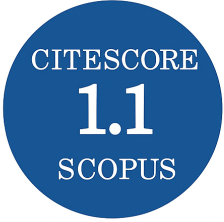Quantification of Command and Control Approaches – Model Based Evaluation
DOI:
https://doi.org/10.3849/aimt.01331Keywords:
deterministic model-based evaluation, military command and control system, self-synchronizationAbstract
The Post-Information Age brings new challenges into the military operational environment. The current approach of the extreme hierarchical command and control cannot be sustained in this complex and dynamic environment. Thus, making the search for new command and control approaches is a critical activity. The description and classification of command and control approaches is expressed in a very abstract way. The article describes a unique, quantification technique of command and control approaches. The quantification is demonstrated by Use Case with self-synchronization as the selected command and control approach. In the Use Case, the deterministic dynamic model is implemented. The results achieved from the model demonstrate a variance of a single parameter, on which the quality of the selected Command and Control approach in the given operational scenario quantifies.
References
ALBERTS, D.S. and HAYES, R.E. Power to the Edge: Command, Control in the Information Age. Washington: CCRP Publication Series, 2003. 303 p. ISBN 1-893723-13-5.
FJELDSTAD, O., SNOW, C., MILES R. and LETTL, C. The Architecture of Collaboration. Strategic Management Journal, 2012, vol. 33, no. 6, p. 734-750. https://doi.org/10.1002/smj.1968.
MALIK, Z., HASHMI, K., NAJMI, E. and REZGUI, A. Wisdom Extraction in Knowledge‐Based Information Systems. Journal of Knowledge Management, 2019, vol. 23, no. 1, p. 23-45. https://doi.org/10.1108/JKM-05-2018-0288.
TOLK, A. Modeling and Simulation Interoperability Concepts for Multidisciplinarity, Interdisciplinarity, and Transdisciplinarity – Implications for Computational Intelligence Enabling Autonomous Systems. In Proceedings of Modelling and Simulation for Autonomous Systems. Cham: Springer, 2015, p. 60-74. DOI 10.1007/978-3-319-22383-4_5.
ORMROD, D. and TUSNRBULL, B. Developing a Military Cyber Maturity Model for Multi‐Domain Battle Mission Resilience and Success. International Journal of Cyber Warfare and Terrorism, 2017 vol. 7, no. 4, p. 1-13. https://doi.org/10.4018/IJCWT.2017100101.
LOUVIERIS, P., GREGORIADES, A. and GARN, V. Assessing Critical Success Factors for Military Decision Support. Expert Systems with Applications, 2010, vol. 37, no. 12, p. 8229-8241. https://doi.org/10.1016/j.eswa.2010.05.062.
FARLIK, J. Conceptual Operational Architecture of the Air Force Simulator: Simulation of Air Defense. In Proceedings of the International Conference on Military Technology. Brno: University of Defence, 2015, p. 675-679. https://doi.org/10.1109/MILTECHS.2015.7153723.
BISHT, S., BHARATI, H.S., TANEJA, S.B. and BEDI, P. Command Agent Belief Architecture to Support Commander Decision Making in Military Simulation. Defence Science Journal, 2018, vol. 68, no. 1, p. 46-53. https://doi.org/10.14429/dsj.68.11375.
STARÝ, V., KŘIVÁNEK, V., ŠTEFEK, A.. Optical Detection Methods for Laser Guided Unmanned Devices. Journal of Communications and Networks, 2018, vol. 20, no. 5, p. 464-472. ISSN 1229-2370. https://doi.org/10.1109/JCN.2018.000071.
HAYES, R.E. and ALBERTS, D.S. Understanding Command and Control. Washington: CCRP Publications, 2011. 222 p. ISBN 1-893723-17-8.
SHENOY, R. Command, Control, Communication and Intelligence Systems A Review. Defence Science Journal, 2014, vol. 37, no. 4, p. 423-431. https://doi.org/10.14429/dsj.37.5929.
DEKKER, A.H. C2, Networks, and Self‐Synchronization. Network Topology in Command and Control: Organization, Operation, and Evolution. Eds Grant, T.J., Janssen, R.H.P. and Monsuur, H. IGI Global, 2014, p. 191-215. https://doi.org/10.4018/978-1-4666-6058-8.ch009.
LEE, Y., and LEE, T. Network‐Based Metric for Measuring Combat Effectiveness. Defence Science Journal, 2014, vol. 64, no. 2, p. 115-122. https://doi.org/10.14429/dsj.64.5534.
HUBER, R., MOFFAT, J. and ALBERTS, D. Achieving Agile C2 by Adopting Higher Levels of C2 Maturity. [on-line]. In Proceedings of the International Command and Control Research and Technology Symposium, 2012, p. 1-19. [cited 2008-02-12]. Available from http://www.dodccrp.org/events/17th_iccrts_2012/post_conference/papers/021.pdf.
BAROUTSI, N.A. Practitioner’s Guide for C2 Evaluations: Quantitative Measurements of Performance and Effectiveness. In Proceedings of the International ISCRAM Conference. Rochester: Rochester Institute of Technology, 2018, p. 170-189. ISBN 978-0-692-12760-5.
HARTLEY, D.S. Comparing Validation Results for Two DIME/PMESII Models: Understanding Coverage Profiles. In Proceedings of the 2010 Winter Simulation Conference. Baltimore: IEEE, 2010, p. 420-440. https://doi.org/10.1109/WSC.2010.5679141.
Ventana System, Inc. Ventity Software [on-line]. [cited 2019-03-2019]. Available from https://ventity.biz.
Downloads
Published
License
Copyright (c) 2019 Advances in Military Technology

This work is licensed under a Creative Commons Attribution-NonCommercial 4.0 International License.
Authors who publish with this journal agree to the following terms:
1. Authors retain copyright and grant the journal right of first publication with the work simultaneously licensed under a Creative Commons Attribution License that allows others to share the work with an acknowledgement of the work's authorship and initial publication in this journal.
2. Authors are able to enter into separate, additional contractual arrangements for the non-exclusive distribution of the journal's published version of the work (e.g., post it to an institutional repository or publish it in a book), with an acknowledgement of its initial publication in this journal.
3. Authors are permitted and encouraged to post their work online (e.g., in institutional repositories or on their website) prior to and during the submission process, as it can lead to productive exchanges, as well as earlier and greater citation of published work.
Users can use, reuse and build upon the material published in the journal for any purpose, even commercially.






